The recommended and must-see sightseeing spots ranking when you visit Gifu!
Other than classic spots, there are also hidden sightseeing spots of Gifu that are known only to locals!
Contents
Gifu, a sightseeing area that represents the Chubu region!
Gifu-Prefecture is one of the landlocked prefectures located in the Chubu region.
There are lined up various must-see places, including as the center, Gifu-City, where there is “Gifujo Castle” that was a base of unification of the whole country by Nobunaga Oda.
Also, natural hot springs, including “Okuhida Onsengo” and “Gero Onsen”, nostalgic townscapes, including “Hida Takayama” and “Magome Juku Post Town”, and natural scenery, including “Yoronotaki Falls” are there.
Also, “Hida Furukawa” where was a stage of “Your Name.”, a smash hit movie, is becoming popular rapidly as a pilgrimage spot (meaning visiting the location of scenes in novels, movies, dramas, and animation, considered these places as equivalent to holy places).
For this time, we will introduce you to sightseeing famous places selected by locals where you should visit during a Gifu trip!

Classic spots of Gifu where the first-time visitors wish to visit
Takayama-City / Shinhotaka Ropeway


Shinhotaka Ropeway is where you can enjoy the vast nature of the Japanese Alps mountains that is beautiful in each season as spring, summer, fall, and winter.
From the observation deck that is located on a rooftop of Nishihotakaguchi Station of 2,156-meter elevation, a large panoramic view, which was published in the “Michelin Green Guide Japan” as two stars, expands.
Please indulge by all means also a footbath of Shin-Hotaka Onsen Station and dining places of a local specialty.
Two-story ropeway only here nationwide. It climbs among mountains at a high-speed.
Opening hours
From 9 AM to 4:15 PM (Varies depending on seasons.)
* May close for maintenance.
Fare
Both No.1 and No.2 ropeways (round trip): Adults (13 years old and above) Yen 2,900, Children (6 years old and above 12 years old and under) Yen 1,450.
Baggage ticket (for baggage more than 6kg): Yen 600
Access
[By bus] About 40-minute ride to Shinhotaka from Hirayu by a bus
Shirakawa-Village / Shirakawa-go Gassho Zukuri Community


Where surrounded by the vast nature, in one of the heaviest snowfall areas in Japan, there are still existing about 100 houses of Gassho Zukuri (with a steep rafter thatched roof), houses which mark the passage of time of several hundreds of years.
Registered also as the World Cultural Heritage in 1995, it is one of the largest classes nationwide of Gassho (steep rafter roof) communities.
While even today residents are living as actual life places, there are also spotted around many facilities that you can observe the inside, including Wada House of National designated important cultural property.
During the season of accumulated snow of the middle of January through early February, the fantastic illumination of the Gassho community is held.
Gassho Zukuri Folk Village & Hida Takayama Day Tour from Nagoya
You can see the original landscape of Japan where tradition and people’s lives breathe.
Opening hours
Wada house opens from 9 AM to 5 PM and closes irregularly. Opening hours of other facilities are varied.
Admissions
For Wada house, Adults Yen 300, Children Yen 150. Admissions of other facilities are varied.
Access
[By train] About five-minute walk after getting off at “Shirakawago” of Nohi Bus from “Takayama” station of JR Takayama Main Line.
Gasshozukuri Minkaen Outdoor Museum


The scenery of Shirakawa-go is lined with unique straw-roofed houses.
Nowadays, many tourist buses carrying people from overseas come here.
Then, I would like to recommend “Gasshozukuri Minkaen Outdoor Museum“, an outdoor museum.
There are 9 buildings of prefectural important cultural assets, including stables and warehouses as well as houses.
There are also stables and warehouses as well as houses.
Address: 2499 Ogimachi, Shirakawa Village, Gifu Prefecture, Japan



Takayama-City / Old town of Hida Takayama


Three lines of Kamimachi and Shitamachi of Takayama-City, which are developed as a castle town and a merchant town of the Edo Period, are called as “old town”, and it is the nationally-selected preservation districts for groups of historic buildings, where there are lined up with residences of that time.
Especially, around Kamisannomachi, Kamininomachi, and Kamiichinomachi, are also called as “Sanmachi(three town) Dori Street” and are the classic spot for strolling.
Along the street, there are lined up in a row with stores of Mitarashi Dango (skewered rice dumplings in a sweet soy glaze) and Hida beef gourmet, so you can also enjoy eating while walking.
It is also called as “Small Kyoto of Hida“, and it is also fun to look into the old Japanese sake brewery.
Access
[By train] About twelve-minute walk from “Takayama” station of JR Takayama Main Line



Gero-City / Gero Onsen Hot Spring


It is one of “the best three hot springs in Japan”, along with Arima of Hyogo-Prefecture and Kusatsu of Gunma-Prefecture.
The hot water of alkaline simple spring of pH value 9.2 is reputed as a hot spring that is good for the skin, which makes the skin smooth with a natural soap effect.
The centralized control system of hot spring is equipped, and you can bath the original spring of the same spring quality at all the participated inns.
Besides, it is also recommended for you to fully enjoy the famous springs with “Yumeguri Tegata (a ticket for hot spring hopping)” that you can bath three hot springs among the participated inns.



Other than also Funsenchi (the place where hot water spring out) along Hidagawa River, three public baths and free foot spas are fulfilled.
Admissions
Yumeguri Tegata (a ticket for hot spring hopping): Yen 1,300 for one ticket (Junior high school students and above)
* Children from four years old to the sixth-grade students of elementary school are possible to bath with the ticket that is bought by adults. Free admissions for children from zero to three years old.
Access
[By train] Getting off at “Gero” station of JR Takayama Main Line.
Gujo-City / Gujo Odori (dancing)


“Gujo Odori” is said that it became flourished with the encouragement that tried to harmonize the Shi-no-ko-sho (a social order of four divisions that are samurai, farmers, artisans, and merchants) during the Edo Period.
It has about 400 years of history and is also designated as the national important intangible folk culture property.
During nights of about 30 days for two months in summer, there are held dancing everywhere inside the city, and four nights particularly between the 13th and 16th of August there are held “Tetsuya Odori” that they will dance all night long until dawn.
About several hundred thousands of people from nationwide will join to circles of dancing.



It is traditional Bon Odori Dance (traditional dance in Japan during Bon festivals around the middle of August, the dance which is used to honor ancestors). Tetsuya Odori during Bon festivals is overwhelmingly the best.
Tetsuya Odori
Between 13th and 16th of August from 8 PM to around 4 AM the next day.
* Children from four years old to the sixth-grade students of elementary school are possible to bath with the ticket that is bought by adults. Free admissions for children from zero to three years old.
Access
[By train] Getting off at “Gujo” station of Nagaragawa Railways from “Mino Oota” station of JR Takayama Main Line.
Gujo-City/Gujo Hachiman
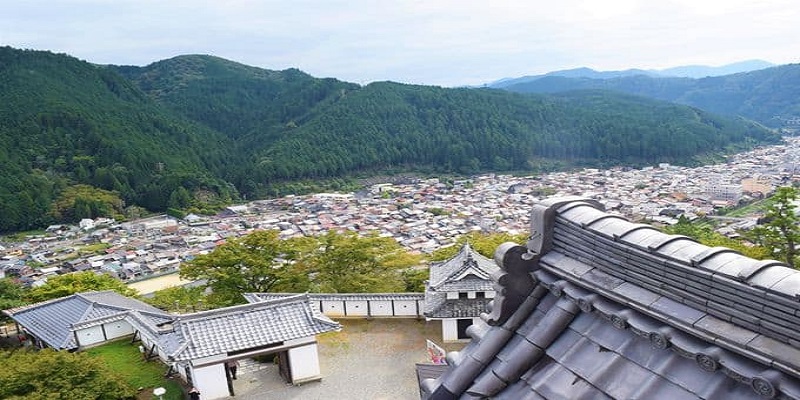

Gujo-Hachiman, an urban area of Gujo City in Gifu Prefecture, is known for the summer tradition of the “Gujo Odori” dance.
Gujo Hachiman flourished as the castle town of Gujo Hachiman Castle and is a fun place to stroll through with its old streets and waterways running all around.
Gujo City boasts the largest share of food sample production in Japan, and sample-making workshops are also popular.


After visiting Gujo-Hachiman Castle, don’t forget to take a walk through the old castle town.
There are beautiful waterways here and there in the old castle town, where you can relax and enjoy your time.
Address: 659 Ichinodaira, Yanagi-cho, Yawata-cho, Gujo City
Phone number: 057-567-1819
Access: 10 minutes by car from Gujo Hachiman I.C.
Yoro-Town / Yoronotaki Falls


It is the famous waterfall known for a legend of a dutiful son of “the story of Yoro Koshi (a dutiful son)”, as said that the water of the fall changed to a sake wine.
Flowing down among big rocks and old trees of Yoro Mountains, a majestic appearance of about 30-meter height and about four-meter width is a must-see.
In vast Yorokoen Park that expands as wide as about 78.6 hectares, with this waterfall as its center, there are facilities, including a park golf course, a tennis court, and Kodomonokuni (Children’s Park), and it is also famous for the beauties of cherry blossoms and autumn leaves.
It is one of Japan’s Top 100 Waterfalls. You can enjoy changing landscapes in seasons.
Opening hours
Yorokoen Park: From 9 AM to 5 PM
Closes on every Monday (If holiday, closes on the next day), and between December 29 through January 3.
Access
[By train] About a ten-minute walk from “Yoro” station of Yoro Railway.
Gifu-City / Gifu Nagaragawa Ukai (Cormorant fishing on the Nagaragawa River)


What “Ukai (fishing with cormorants)” is a traditional fishing method that a cormorant fisherman manages cormorants and catches fish.
Protected by persons of the period, such as Nobunaga Oda, it is a seasonal feature of Nagaragawa River, Gifu in summer.
Ukai, which is performed in darkness of jet black night with burning torch fire of bright red, can be observed besides from a sightseeing boat with fares, also from riversides.
The full set of tools for the Ukai of Nagaragawa River is designated as the National important tangible folk culture property, and the technique is also designated as the National important intangible folk culture property.
It is inherited as a seasonal feature of the summer of Gifu and has a history of more than 1300 years.
Opening hours
Performing periods: From May 11th to October 15th. (Not performed on the harvest moon and when the rise of a river.)
Starting time: From 7:30 PM or 7:45 PM (Varies depending on events)
Departure time of a sightseeing boat: 6:15 PM, 6:45 PM, and 7:15 PM
* Not on sail on days of the fireworks festivals (the last Saturday of July and the first Saturday of August).
Fare
Boarding fare of a sightseeing boat: Adults (Junior high school students and above) Yen 3,400, Children (three years old and above, elementary school students and below) Yen 1,700.
* Adults fare for boats departing at 6:45 PM and 7:15 PM on weekdays: Yen 3,100.
Access
[By train] About one minute walk after getting off at “Nagarabashi” stop of Gifu Bus from “Gifu” station of JR Tokaido Main Line/ Takayama Main Line or from “Meitetsu Gifu” station of Meitetsu Nagoya Main Line/ Kagamihara Line.
Gifu-City / Gifujo Castle


Located on the peak of Mt Kinkazan, it is a symbol of Gifu where you will access by a ropeway.
During the Sengoku Period (approx. 1467 – 1568), it was a residence castle of Dosan Saito, and later, Nobunaga Oda became the lord of the castle and made it as a base of unification of the whole country.
The current castle is rebuilt on the Showa 31st (1956), and it is structured three layers and four stories of reinforced concrete construction.
The inside of the castle is opened to the public as a reference exhibition room and the castle tower as an observation deck. From after sunset until 11 PM, it is illuminated beautifully.



From the height of 329-meter elevation, you can overview the Nagaragawa River and the inside city.
Opening hours
Gifujo Castle: From 9:30 AM to 5:30 PM (Varies depending on seasons. From 6:30 AM to 4:30 PM on January 1st.) Opens every day.
* There is a panoramic night view service only for a limited period.
Admissions
Admissions of Gifujo Castle: Adults (16 years old and above) Yen 200, Children (4 years old and above, 15 years old and below) Yen 100.
Access
[By train] Take Gifu Bus from “Gifu” station of JR Tokaido Main Line/ Takayama Main Line or from “Meitetsu Gifu” station of Meitetsu Nagoya Main Line/ Kagamihara Line, and get off at “Gifu Koen/ Rekishi Hakubutsukan Mae” stop.
About a three-minute walk to Gifu Koen Park.
Take Kinkazan Ropeway in the park, and get off at “Kinkazan Ropeway Sancho” station, and about the seven-minute walk.
Nakatsugawa-City / Magome-Juku Post Town
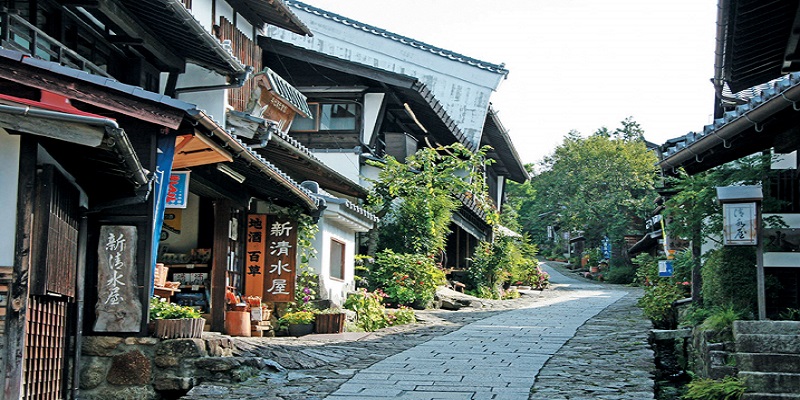

The historical houses of that time are still existing along a slope of cobble paving.
There are must-see points lined up, including a water mill hut and Toson Memorial Museum that is a remain of Magome Honjin (an inn officially designated as lodging for a feudal lord in the Edo period) also that is the house where Toson Shimazaki was born, and also places like Minshuku (private home that runs an inn providing room and board), cafes, and souvenirs shops.
There is also well arranged a trail that you can enjoy Nakasendo Hiking of about eight kilos until Tsumagoi-Juku post town that is located in Nagano-Prefecture, a neighbor.
Let’s have a nostalgic strolling at a post town of Nakasendo Road that was set at the farest south of Kiso!
Opening hours
Free for strolling (Opening hours and holidays of each facility are varied.)
Access
[By train] Getting off at “Magome” of Kitaena Kotsu Bus Magome Line from “Nakatsugawa” station of JR Chuo Line.
Toki-City / Toki Premium Outlets
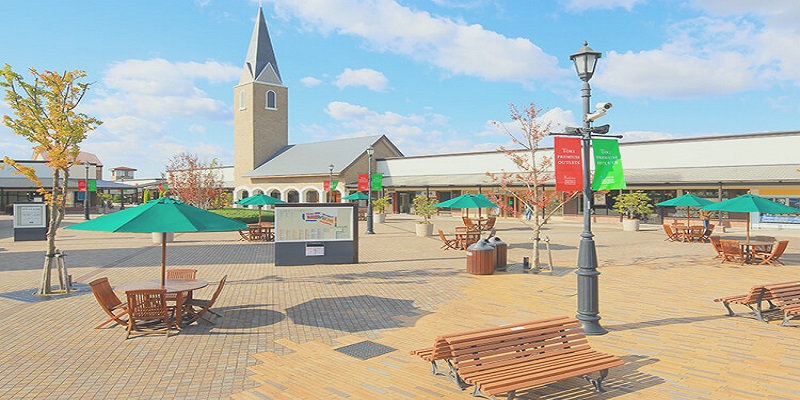

There are lined up with about 180 shops, including directly managed stores of prestigious brands of out and inside of Japan, and whenever you visit, you can enjoy shopping at outlet prices.
There are also fulfilled with gourmet restaurants that prepare seasonal menus.
There is also a direct bus from Nagoya.
You can fully enjoy shopping whole day long at the ground that is beautifully organized.
Opening hours
From 10 AM to 8 PM (May vary depending on seasons and facilities.)
Closes on the third Thursday of February.
Access
[By train] Getting off at “Magome” of Kitaena Kotsu Bus Magome Line from “Nakatsugawa” station of JR Chuo Line.
Recommended hidden spots of Gifu that are known only to locals.
Ena-City / Enakyo gorge


There are many places of beautiful scenery, including Shishiiwa (lion-shaped rock) and Byobu-Iwa (sheer cliff) on both sides of the gorge, and a panoramic cruising on a sightseeing boat is popular.
In “Sazanami Koen Park” on the right side of the dam lake, there is well arranged strolling trails, and with a background of the lake, you can fully enjoy the scenic landscape by four seasons, including cherry blossoms, wisteria flowers, and torch azaleas.
Around there are many stop-by places, including “Enakyo Wonderland”!
Opening hours
Enakyo Cruise: From 9 AM to 4:30 PM (From 8:30 AM to 5 PM during July 1st through August 31st. From 10 AM to 3 PM during December 1st through March 31st.)
Fare
Enakyo Cruise Boarding fare: Adults Yen 1,280, Children (Elementary School Students) Yen 640.
Access
[By train] About five-minute walk to the boarding place of a cruise boat after getting off at “Enakyo” of Totesu Bus from “Ena” station of JR Chuo Line.
Nakatsugawa-City / Kur Resort Yubunesawa


Kur Resort Yubunesawa is an aqua facility that utilizes Nakatsugawa Onsen, which is alkalescent and is reputed as hot spring that is “good for the skin”.
It is fully equipped with facilities, including natural hot spring Zone, such as an open-air bath of full of spaciousness, Bade Zone that lined up with 13 kinds of functional baths that you bath in swimming suits, and Pool Zone where is equipped with a heated water pool of 20 meters and water slider.
Besides an indoor park that parents and children can play together and dining places, an accommodation package of the adjoined “Hotel Hanasarasa” are also recommended.
It is an aqua facility where you can enjoy a natural hot spring and a pool.
It is also close to Magome-Juku Post Town.
Opening hours
From 10 AM to 10 PM.
Closes on the fourth Thursday. (Please check and confirm in advance as it may be changed depending on a month.)
* Opens only the hot spring zone during weekdays. (The Pool Zone and the Bade Zone open only on Sat/Sun/holiday and during a high season.)
Admissions
Bathing fee (the hot spring zone): Adults (Junior high school students and above) Yen 600, Children (Three years old and above to Elementary school students) Yen 300. * Adults Yen 800, Children Yen 500 on Sat/Sun/holidays and during a high season.
Admissions for all facilities (Hot spring, pool, and Bade Zones): Adults (Junior high school students and above) Yen 1,500, Children (Three years old and above to Elementary school students) Yen 700. * Adults Yen 2,000, Children Yen 1,000 during a high season.
Access
[By train] About 15-minute ride on a free shuttle bus or a taxi from “Nakatsugawa” station of JR Chuo Line.
Hida-City / Hida Folk Village


Hida Folk Village is a facility that reconstructs and restores the traditional Gassho-zukuri houses and shrines unique to the Hida region where there is a lot of snowfall.
Visitors can experience the nostalgic lifestyle of the Hida farming and mountain village.
Hida Folk Village, in addition to the exhibition, there are also demonstrations of straw crafting, folk tool making, vegetable and flower cultivation, and more.
It’s rare opportunity to see the intangible culture of Hida.
Admission:300 yen for adults and 100 yen for elementary
Hida-City / Old town of Hida Furukawa


Called also as an inner parlor of Takayama, “Hida Furukawa” is the other remaining old town in Hida.
There remain looks of the castle town of full of sentiment, including town planning like a go board (a grid design), old merchant houses, and white walls storehouse street that continues for about 500 meters.
Among them, with a background of white walls storehouses, Setogawa River, where a thousand more carps swim, is the main spot for photo shooting.
During later November through early April, carps are in a pond of a ruin of Masujimajo Castle for passing the winter.



You can enjoy the town strolling humble and elegant.
Access
[By train] Getting off at “Hida Furukawa” station of JR Takayama Main Line.
Hida-City / Hida Furukawa Station


It is a station of JR Takayama Main Line and is the station representing Hida-City, a town of tourism.
As this station was drawn in the animated movie “Your Name.” that was screened in August 2016, it is a popular spot of, so to speak, “a pilgrimage (meaning visiting the location of scenes in novels, movies, dramas, and animation, considering these places as equivalent to holy places)”.
Hidakuro, a mascot character of Hida beef, which was also appeared in the movie, is settled down in the station building, and it is a given that you shoot photos here just like Taki, the main character, and friends did.
It is a base of a townscape strolling of Hida Furukawa.
It is the station of real existence that appears in the smash hit movie “Your Name.”
Access
[By train] Getting off at “Hida Furukawa” station of JR Takayama Main Line.
Gero-City / Kinkotsu Meguri (exploring narrow alleys)
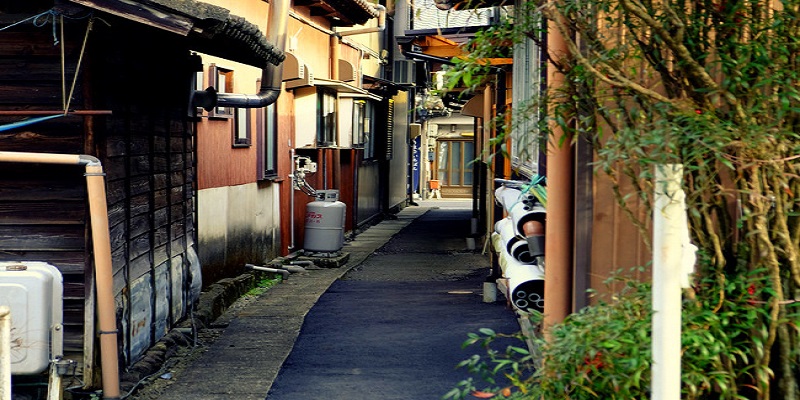

What Kinkotsu (muscles and bones) is “narrow and winding alleys” in words of the Hida region.
It is said that the muscles and bones of a body are compared to alleys and streets that are complexly interwound.
In “Kinkotsu Meguri (exploring narrow alleys)” that is of reservation system and is accompanied by a guide, you can enjoy the exploration of retro alleys, which are created by traces of flourishing as Kanayama-Juku of Hida Kaido Road, and by wooden houses of the Meiji – Showa Period.
You can also enjoy a simple-eating-while-walking at a Japanese-style confectionery store, etc. along the way of the course!
It seems as if a shooting set of a movie. Let’s go for an exploration of nostalgic alleys!
Opening hours
Kinkotsu Meguri (exploring narrow alleys) with a guide: reservation system until one day before (required time is about one to one and half hours)
For reservation and inquiries: Kanayama Tourist Association 080-3637-2201/ 0576-32-3544 (From 8 AM to 7 PM. Closes on Sat/Sun/Holidays)
Fees
one to three persons in one group: Yen 1,000. (Yen 300 per person if more than four persons.)
Access
[By train] Right after a walk from “Hida Kanayama” station of JR Takayama Main Line.
Seki-City / Monet’s pond


Located in the ground of Nemichi Jinja Shrine of Itadori, Seki-City, it is a pond without even a name.
Water lilies that bloom in spring water of high degrees of transparency and swimming postures of varicolored carp are very beautiful.
And because it looks similar to “a water lily” that was drawn by Claude Monet, a French painter, it is called by a common name “Monet’s pond“.
It has also been introduced over the Internet and TV, and especially in a season of early summer when water lilies bloom, it becomes a shooting spot of many photographers regardless of pro-am.



Expanded by word of mouth, it is a pond of topic that became now popular nationwide.
Access
[By train] Take Gifu Noriai Bus from “Gifu” station of JR Tokaido Main Line and Takayama Main Line, and get off at “Horado Kiwi Plaza” stop. Transfer to Itadori Fureai Bus and get off at “Shiratani Ajisaien Mae” stop, and about a five-minute walk.
Takayama-City / Nagase Suppon Farm (Suppon: a soft‐shelled turtle)


At Nagase Suppon Farm of Okuhida Onsengo Hirayu Onsen at the foot of the Northern Japanese Alps, Suppons are farmed in abundant hot spring and in the water of melted snow of the Japanese Alps.
Suppons are processed to dietary supplement nutraceutical, and at the store, you can try drinking a sample and buy products.
A small aquarium is adjoined also, and you can observe by free of charge, including a giant tortoise and tropical fish of freshwater.
Souvenirs, including confections and soups that used powders of Suppon, are also popular!
Opening hours
From 8 AM to 4:30 PM
Closed on or around the New Year’s Day (December 31 to January 2)
Access
[By train] About five-minute walk from “Hirayu Onsen” stop of Nohi Bus from “Takayama” station of JR Takayama Main Line.
Yoro-Town / Site of Reversible Destiny Yoro Park


Yoro Park is a theme park that realized the idea of Mr. Shusaku Arakawa, the world’s famous artist, and his partner and a poet, Mrs. Madeline Gins.
You can experience wondrous art space, in which a sense of balance of your body will be tested, including the main pavilion “Critical Resemblance House”, the Japanese islands various sized, big and small, that were created in a huge basin hollowed out in ellipse shape, and as many as 148 winding paths of strolling around.
Please enjoy the space where you can meet with “wonders” that you can never anticipate.
Opening hours
From 9 AM to 5 PM (Entrance is until 4:30 PM)
Closes on every Monday (if a holiday, closes on the next day), and on and around the New Year’s Day (December 29 – January 3).
Fees
Adults Yen 750, High school students Yen 500, Junior high and elementary school students Yen 300.
Access
[By train] About a ten-minute walk from “Yoro” station of Yoro Railway
Kagamihara-City / World Freshwater Aquarium Aquatotto Gifu
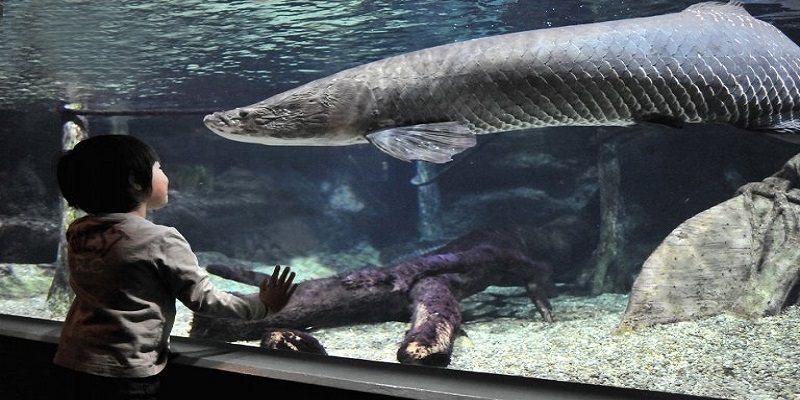

Aquatotto Gifu is the aquarium specialized to freshwater fish of the world’s largest class.
With the theme of “From the headstream of the clear stream Nagaragawa River of Gifu-Prefecture to the mouth of a river, and freshwater fish in the world”, the natural environment is reproduced inside of the building and exhibited.
And there, from living things of familiar to large freshwater fish of the world are being reared.
Mekong giant catfish, the world’s largest catfish lives in Mekong River, and a pirarucu, a big fish that lives in Amazon River, are full of impact.
A performance of sea lions and feeding experience are held every day.
A backyard tour and an overnight tour, etc. are also popular.
Opening hours
From 9:30 AM to 5 PM (Last entrance is at 4 PM). Opens till 6 PM on Sat/Sun/Holiday (Last entrance is at 5 PM).
Opens every day. (Corresponding to holidays of Water Eco Park)
Fees
Admissions: Adults Yen 1,500, High and Junior high school students Yen 1,100, Elementary school students Yen 750, Toddlers (three years old and above) Yen 370.
Access
[By train] About fifteen-minute walk from “Kawashima Kasada” stop of Gifu Bus from “Gifu” station of JR Tokaido Main Line and Takayama Main Line.
Kaizu-City / Chiyoho Inari Jinja Shrine


Chiyoho Inari Jinja Shrine is loved with a nickname of “Ochobo-san”, and it is an Inari Jinja Shrine that is said that brings luck for good commerce and family safety.
Many worshipers visit for “a visit of over the month-end” that from the end of every month through the next first day.
And in front of the worship building, it is so crowded that you can hardly move about, and such a crowd continues from around midnight until early morning.
On the approach where around 120 stores are lined up, please also check specialty dishes, including grilled catfish that grew in Kiso Sansen three rivers basin and deep-fried skewered meat and vegetables.
It is also fun to eat while walking of “Ochobo gourmets” on the approach.
Access
[By train] About one-minute walk after getting off at “Ochiyoho Inari” of Kaizu Community Bus from “Gifu Hashima” station of Tokaido Shinkansen Bullet Train.
Gifu’s Attraction Map
The information may have been changed when you use it, so please check and confirm the latest information on the official website when you use it.


















